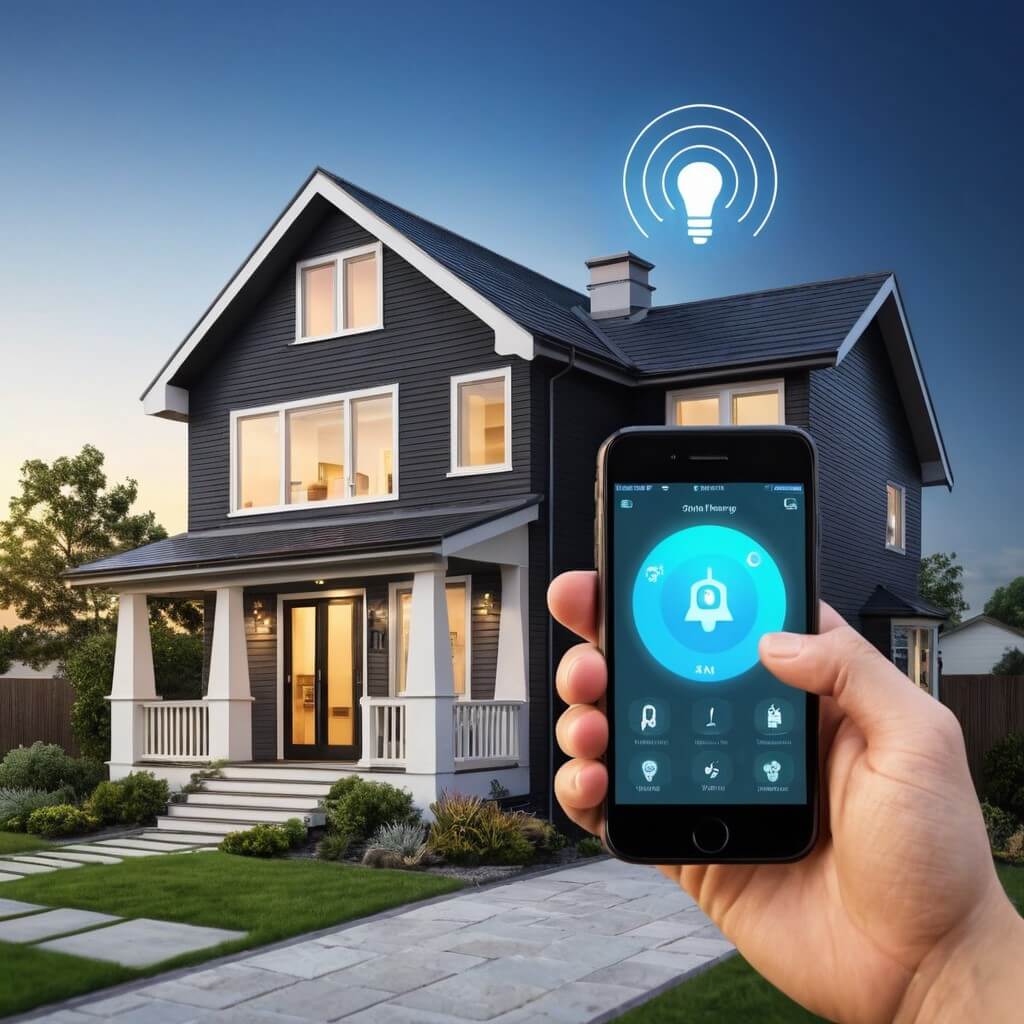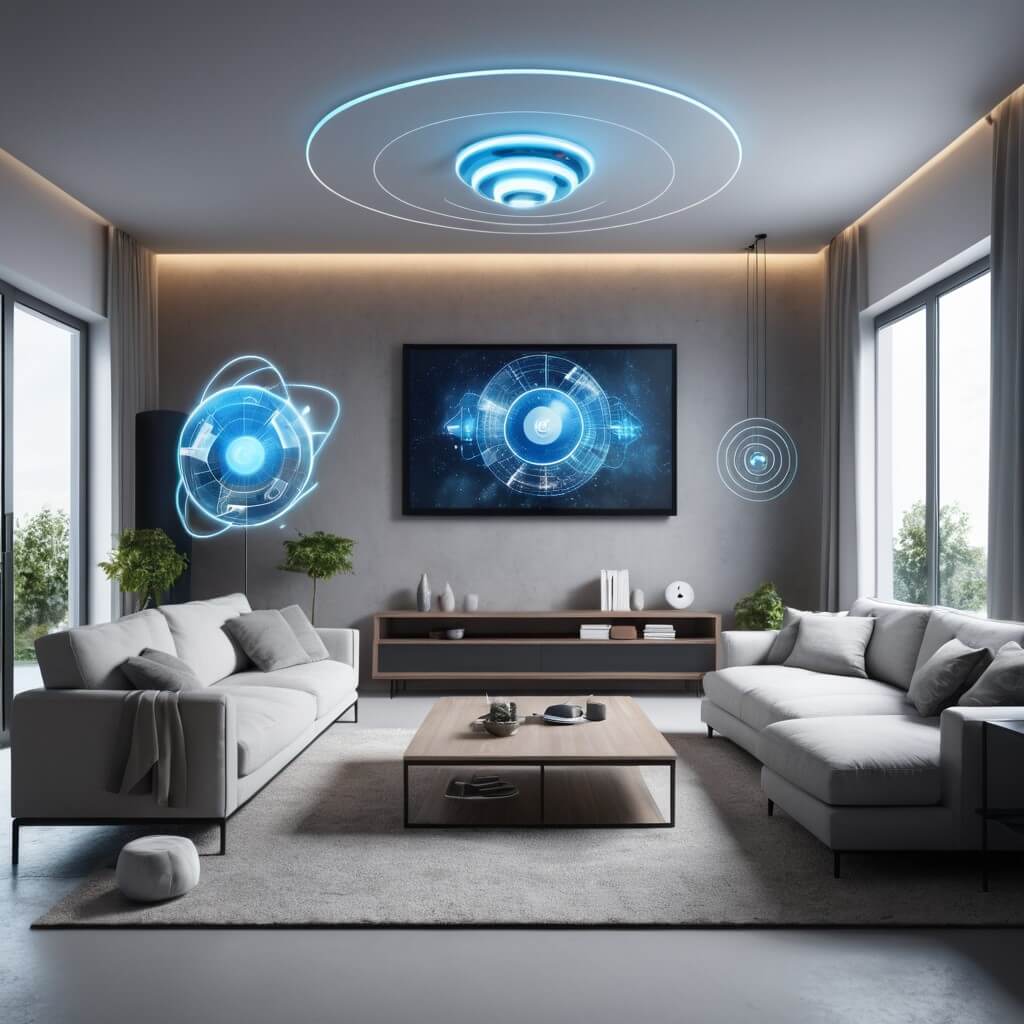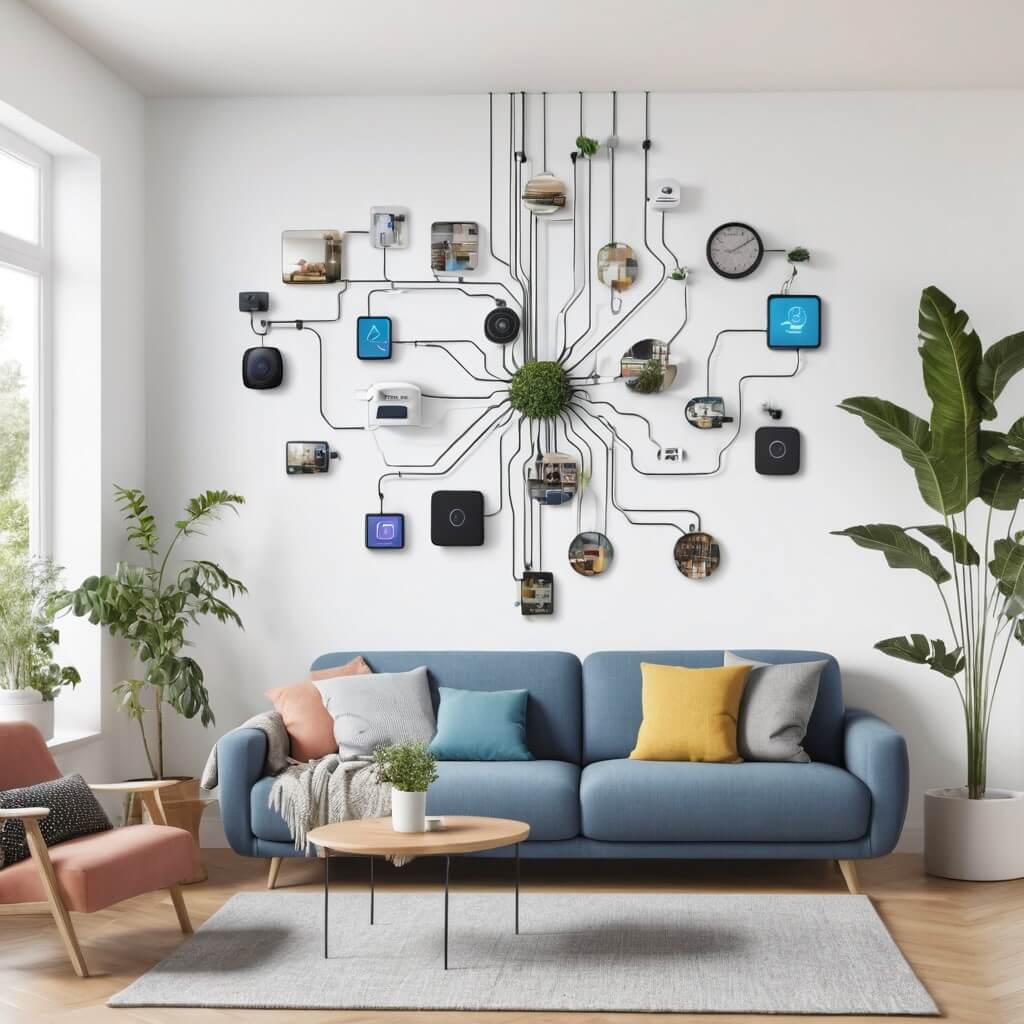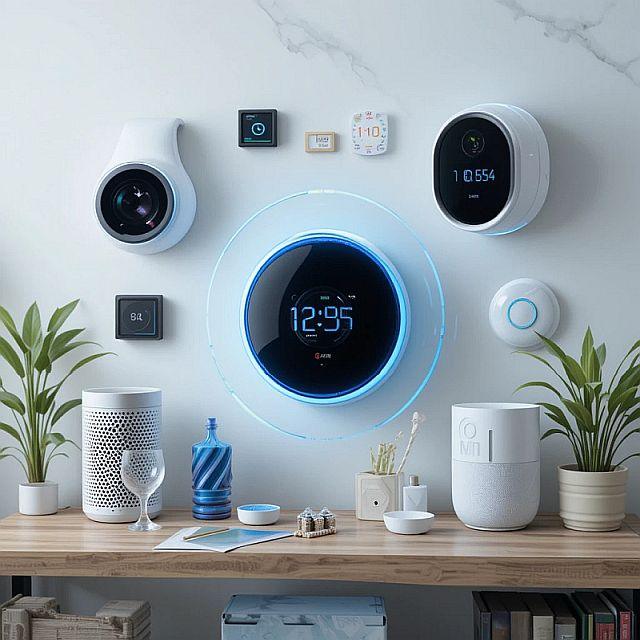Transparency: This post contains affiliate links. If you buy through them, I may earn a commission at no extra cost to you. Learn more.
Intelligent smart homes are redefining the future of living…”

Welcome to the Future of Home Living
We are entering a time where our homes are more than just buildings — they are living, responsive environments.
A new era of home living has begun — powered by intelligent smart homes, cutting-edge technologies, and AI-driven tools that are designed to make your daily life easier, safer and more enjoyable.
Imagine waking up in a home that anticipates your needs, adjusts the temperature for your comfort, saves energy while you sleep, and keeps your family protected — completely on its own.
This isn’t science fiction. This is happening now.

What Makes an Intelligent Smart Home?
An intelligent smart home integrates AI, IoT, and advanced sensors to deliver a fully connected and personalized environment.
These systems learn your habits, react to your preferences and even prevent problems before they appear.
Core features include:
| Feature | Benefit |
|---|---|
| Voice & Gesture Control | Control everything with simple commands |
| Automated Energy Management | Save money & reduce carbon footprint |
| Real-Time Security | Receive instant alerts and monitor remotely |
| Personalized Experiences | Home adapts to your needs and routine |

“5 Reasons Why Intelligent Smart Homes Are the Future of Living”
Here are 5 powerful reasons why intelligent smart homes are transforming the future of living:
Comfort You Can Feel
Custom lighting, heating and entertainment systems adjust automatically based on your lifestyle.
Security You Can Trust
Smart cameras and smart locks keep your home safe 24/7 — even when you’re miles away.
Discover our All-in-One Smart Security Automation for total home safety and real-time control.
Technology That Learns
AI systems analyse behaviour and become smarter over time — giving you more comfort with less effort.
AI Is Redefining Home Design
Artificial intelligence is not just used for automation — it’s also revolutionizing home design itself.https://aihomedesign.com/?via=snjezana
With tools like AI HomeDesign, you can completely redesign your home in minutes:
- generate modern layouts,
- visualize room concepts,
- and optimize your space for future-ready living.
These tools don’t just decorate — they help you future-proof your home.

Connectivity: The Backbone of Smart Living
Thanks to the Internet of Things (IoT) and high-speed 5G connectivity, smart devices can now communicate in real time and work together seamlessly.
That means:
- faster responses,
- smoother automations,
- and one single app controlling it all.
Sustainability and Responsibility
Modern intelligent homes are eco-conscious and built for sustainable living.
Energy-saving tools reduce waste, while smart irrigation systems protect natural resources.
Some homes even integrate solar panels and AI-powered storage, cutting energy costs dramatically.

Final Thoughts: Your Home, Reinvented
This new era of home living is not just about technology — it’s about transforming the way you live.
Intelligent smart homes give you:
- the comfort you deserve,
- the security your family needs,
- and the sustainability the world expects.
The future is here.
Make sure your home becomes an intelligent smart home and join the future of living.”

Hi, this is a comment.
To get started with moderating, editing, and deleting comments, please visit the Comments screen in the dashboard.
Commenter avatars come from Gravatar.
👍
Pingback: From Boring to Beautiful with AI HomeDesign
Pingback: Smart Home Devices 2025 That Make Life Easy and Safe